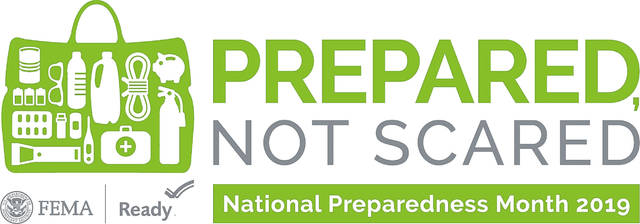
Note: The Ready Tonight series of articles by the Clinton County Emergency Management Agency is to help promote disaster preparedness and increase resilience for all county residents.
In a typical year, Ohio experiences 19 tornadoes. On the evening of May 17, 21 tornadoes descended upon Ohio, leaving large swaths of destruction. Fifteen of those happened within 2.5 hours and were within 50 miles of Clinton County.
Imagine if the Greene County storm system dipped 30 miles to the south and affected Clinton County — Clarksville, Port William, Wilmington, Sabina, and nine of 13 townships.
Could you have endured up to 3-5 days without power, water, cell service, or internet access? Could you afford to be off work for more than a week?
A Federal Emergency Management Agency (FEMA) study found that most American’s are dangerously underprepared for major disruptions in their lives.
• 60% of Americans are not prepared for a disaster
• 40% to 60% small businesses are not prepared and never reopen their doors following a disaster
• When the average American is faced with an emergency expense of only $400: 43% will put it on a credit card; 25% will borrow from a friend/family member; 19% will sell something; 9% would use a loan; 5% would use a payday loan or cash advance; and 29% would not be able to pay the expense right away and would need several days to raise the funds
Why are American’s underprepared?
Some say it is from living paycheck to paycheck.
A 2015 Nielsen study, for instance, found 25% of American families making $150,000 or more a year live paycheck to paycheck. One in three households earning between $50,000 and $100,000 find themselves in the same predicament. But according to the US Census Bureau, the median income for Clinton County is $49,997. As the data shows, a paycheck-to-paycheck lifestyle is not exclusive to lower-income earners.
Some would site the economic climate of having to work multiple jobs. However, Bureau of Labor Statistics data show only a small minority of Americans work multiple jobs. That percentage has been around 5% of working Americans since 2010, though it was higher before then. Last quarter, 7.6 million, or 4.9%, of the 155.5 million working Americans had multiple jobs.
Maybe it’s high rents or cost of living? Those monthly expenses include payments to student loans and other debts, healthcare, transportation and childcare.
Home values, for example, have increased by roughly one third since 2012, according to Zillow. In certain markets, the demand for housing has pushed both purchase and rental prices through the roof, eating up a larger share of high earners’ salaries.
Could it be a budgeting issue? According to a new study by Slickdeals.net, the average annual spontaneous purchased per consumer may reach $5,400 annually.
The study looked at 2,000 consumers and indicated that each made an average of three spontaneous purchased per week and added up to around $450 per month. This could include eating out, that new phone, or an amazing online deal. Not having or not sticking to a budget is the most often contributor to a lack of financial preparedness.
Whatever the reason, disaster survivors will find themselves in unfamiliar territory with few resources to work with. Being prepared ensures you have a safety net — call it an “insurance policy” you take out with yourself.
The question is: If tornadoes descend on Clinton County tonight, would you be ready tonight … or a disaster waiting to happen?
Over the next few weeks, you will learn what you can do to prepare for disaster, and if you are already prepared, a few tips and tricks that you might not have thought about to increase the resilience of your family.


